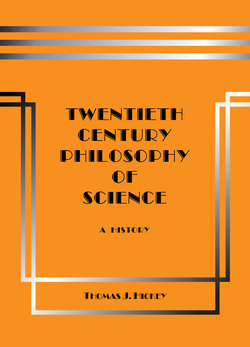Читать книгу Twentieth-Century Philosophy of Science: A History (Third Edition) - Thomas J. Hickey - Страница 32
На сайте Литреса книга снята с продажи.
3.01 Synchronic and Diachronic Analysis
ОглавлениеTo borrow some terminology from Ferdinand de Saussure’s classic Course in General Linguistics language analyses may be either synchronic or diachronic:
The synchronic view is static, because it exhibits the state of a language at a point in time like a photograph. And to borrow some terminology from Rudolf Carnap’s Meaning and Necessity with a revised meaning, in computational philosophy of science the state of the language for a specific scientific problem is displayed synchronically in a “semantical state description”. In the pragmatist’s semantical state description statements both of theory language and of the law language in the relevant test design function as semantical rules that describe the meanings of their constituent descriptive terms.
The diachronic view on the other hand exhibits two chronologically successive states of the language for the same problem as defined by a test design, and shows semantical change over the interim period. Then the view is a comparative-static semantical analysis like “before” and “after” photographs. And if a transitional process between the two successive language states is also described, as in the computer code for a discovery system, then the diachronic view is dynamic like a motion picture.
